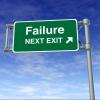Related Content
 |
What’s Your “Size” of Agile? There are approaches to agile that sound great on paper, but will they really be the best choice for your team in practice? Instead of standardizing on any form of agile, think about the results you want. Why not create the environment that works best for you? There's more than one way to do agile. |
|
 |
Breaking Down Your Development and Testing Walls Testing earlier assures better quality. But maybe most important, things like agile and DevOps—which encourage that you shift your testing left and allow for more collaboration between different parts of your team—have broken down the walls that previously separated testers for the rest of the organization. |
|
 |
Finding the Bottlenecks in the Agile and DevOps Delivery Cycle To achieve incremental software development and continuous feedback, you need to eliminate the tasks that create bottlenecks, which hinder the flow of development. A chain is no stronger than its weakest link, and identifying these “weak links” is a critical step toward achieving agility and increasing efficiency. |
|
 |
Managing the Turbulence of Organizational Change In times of major change, particularly organizational change, it's normal for people involved to experience turbulence, including anxiety, anger, or uncertainty. If you’re overseeing a change, how you communicate with those affected can significantly decrease—or increase—the duration and intensity of that turbulence. |
|
 |
Agile Testers Shouldn’t Be Enablers Testing has often been seen as the final stage of creating an application. Since we weren’t shifting testing left as much as we do today, a great deal of work was thrown on the testing team at the very end of an exhausting project cycle. But testers shouldn’t be seen as the last line of defense. |
|
 |
In Praise of Failure Failure is measured by expectations. If we aim to be perfect, or set the expectation that only perfection is acceptable, we risk losing opportunities to get valuable feedback. Creating an expectation of perfection can lead to stagnation, not success. Instead, view failure as a learning experience. |
|
 |
Manage Project Problems without Getting Trapped by Catastrophic Thinking It would be short-sighted for any project manager not to consider the potential risks in the project and not to evaluate and continue re-evaluating what can go wrong. But there's a difference between planning for risk and falling victim to catastrophic thinking—focusing on unlikely or irrational worst-case scenarios. |
|
 |
Before You Can Eliminate Agile and DevOps Bottlenecks, You Need to Identify Them Agile and DevOps, which now dominate software development, lean on continuous integration, continuous testing, and continuous deployment. Because of that, anything that might break this iterative and continuous cycle could throw everything out of whack and stunt your team’s growth. |





